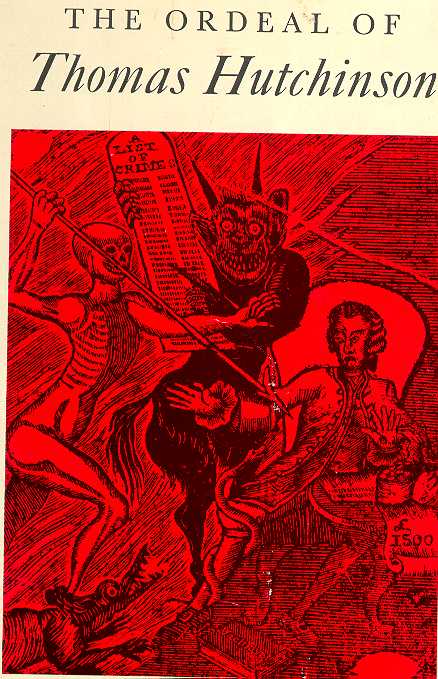|

CLICK FOR MORE |
PERSONALITIES
&
POLITICS IN
THE REVOLUTIONARY MOVEMENT
|

John Adams
|
| Reading
Reading Notes & Questions
Sources
& Links |
OVERVIEW:
Between 1765 and 1775 the
revolutionary movement developed around three crises
over protests against some of Parliament's
legislation. Eventually, the protests led to the
bloodshed of Lexington and Concord in April, 1775. It
is essential, however, to remember that the movement did not aim at
the rupture that came with the war that followed.
This second part of the course looks at the emergence
and development of the revolutionary movement while asking the question:
Were the war and its consequences inevitable?
 |
The reading assignment (see the box at the left)
includes a BBC site dealing with that question.
How does its answer compare with the views of Bailyn and Cook?
|
 |
You will find this
timeline
of the revolutionary decade useful
|
Be sure you have worked
through the readings and notes for Topic 4, particularly the section on
Shaping a New Policy, which
serves as the prelude to the decade of protest.
THEME: During the
crisis decade, opposition to London's policies
intersected with local politics in all the colonies.
This session (Topic 5) looks at politics in key colonies and the role
played by both public issues and personal
conflicts
and
ambitions as
leaders of the revolutionary movement and
their opponents dealt with issues raised by each crisis. The
reading in Bailyn focuses on the theme of "the complex
relationship among personalities, ideas, and events. " It presents
biographical essays on three important Americans as part of his view
that the revolutionary movement ". . . was the product of human decision
and of the impact of personalities and ideas upon the events of the
time. During the years of disruption it therefore mattered who was in
charge, who led the struggle, and who led the opposition to it; it
mattered what kinds of people they were, what patterns of personal
responses they brought to the public life of their time. Above all, it
mattered what they believed, what motivated them, how they perceived the
world and the events in which they participated. " [page x]
|
| COLONIAL
ELITES AND PROVINCIAL POLITICS
An important feature of 18th-century
provincial politics throughout the colonies was the growth of elites
(wealthy and socially prestigious families) who found the political arena
essential to their ambition. They found various avenues:
 | Circles of men around
the governors and in the councils, the appointed upper houses of
colonial legislatures. |
 | Imperial appointments
- difficult to achieve without the leverage of influential networks in
Britain |
 | The elected assemblies
- providing an arena for competing elites
 |
In
every colony the governors and their local political allies had
to deal with opposition factions. |
|
 |
In this session we'll
briefly examine four key colonies: Massachusetts, New York,
Pennsylvania, and Virginia |
MASSACHUSETTS:
Thomas Hutchinson and the "Court Party" and the
Opposition
1760-
Gov. Bernard arrives. James Otis, Sr. expected to be named new Chief
Justice. Instead Thomas Hutchinson got the post.
Hutchinson had accumulated multiple offices (Lieutenant Governor,
President of the Council, Captain of Castle William) and his family and
friends had several good positions. Hutchinson became the target for the
eloquence of James Otis, Jr. Otis and Oxenbridge Thatcher became the
opposition.
Alignment:
1. Otis, Sr. and
some of the "country party" in eastern Massachusetts joined leaders of
the Boston populace who had long been a majority in the Assembly.
2. For a time
Boston's merchants sided with them against the enforce the trade acts.
Although they were continually defeated in Hutchinson's court (Otis
was one of their lawyers), Otis won popularity and in 1761 was elected
to the Assembly. Otis, Sr. was elected Speaker and joined his
followers to the Boston faction. In this way the "Popular Party" was
born.
The Boston
Town Meeting: From May, 1764 it played an increasingly important
role. Its popular leaders like Samuel Adams used the newspapers
to broadcast their views and persuaded the
Town Meeting to adopt their positions in
instructions to the Assembly.
NEW YORK: Delancys vs. Livingstons
PENNSYLVANIA: Proprietary Party vs. the
Quaker Party
VIRGINIA: Smooth politics of a cohesive
oligarchy
|
|